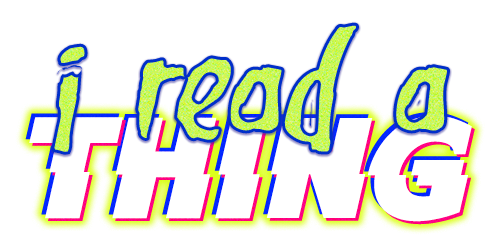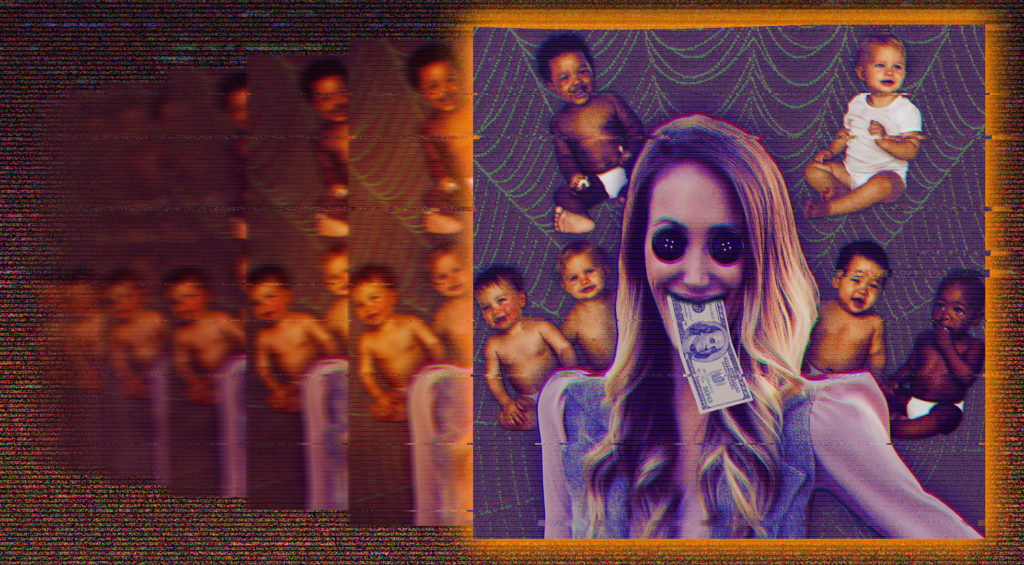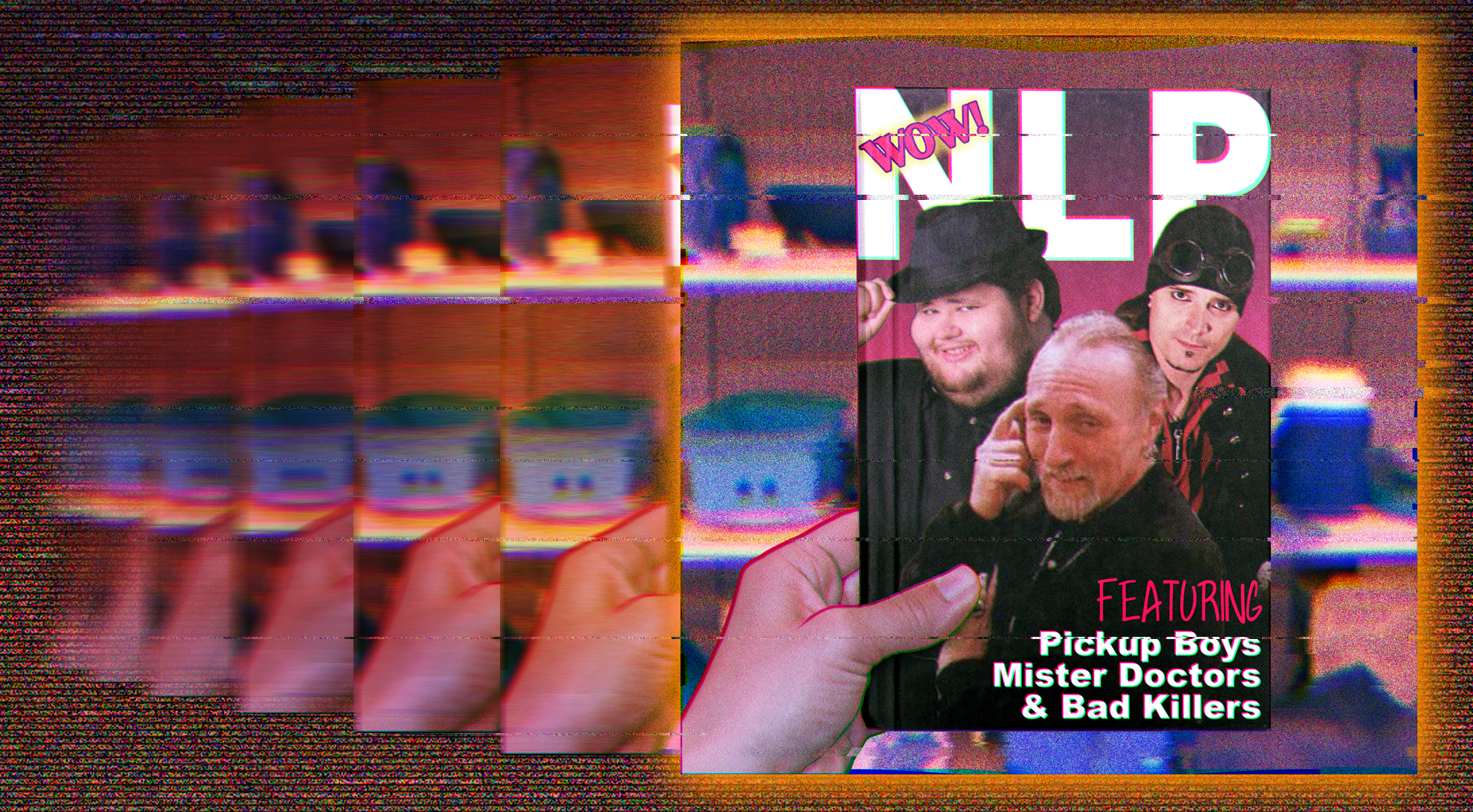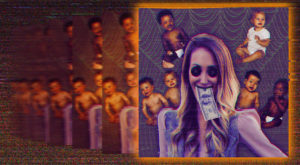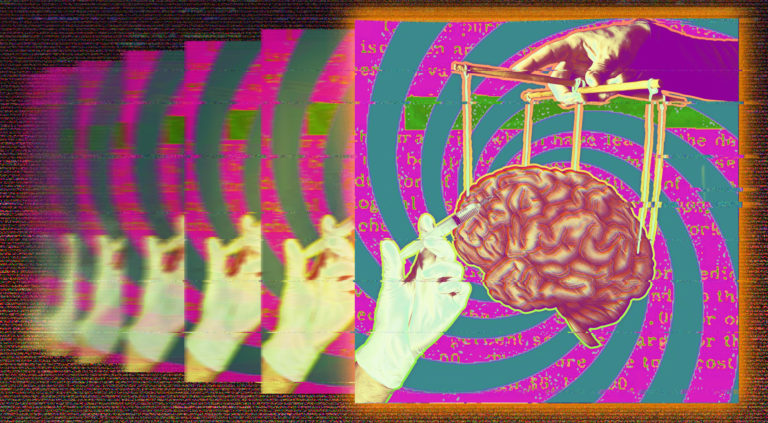Whether or not you watch reality television or mommy vloggers, you have to admit that some shady shit happens when a family chooses to film their lives for mass consumption. Rarely do people consider their children’s long-term mental health and well-being in their quest to get a paycheck for raising their kids. Let’s dive into the murky world of child labor and reality entertainment.
The Predecessor of Family Vloggers, Reality TV
While the concept of “reality” television can be traced back to gameshows that featured real people, our current notion of what constitutes “reality tv” can be linked back to one specific moment in time: the 1973 release of the docuseries “An American Family.”
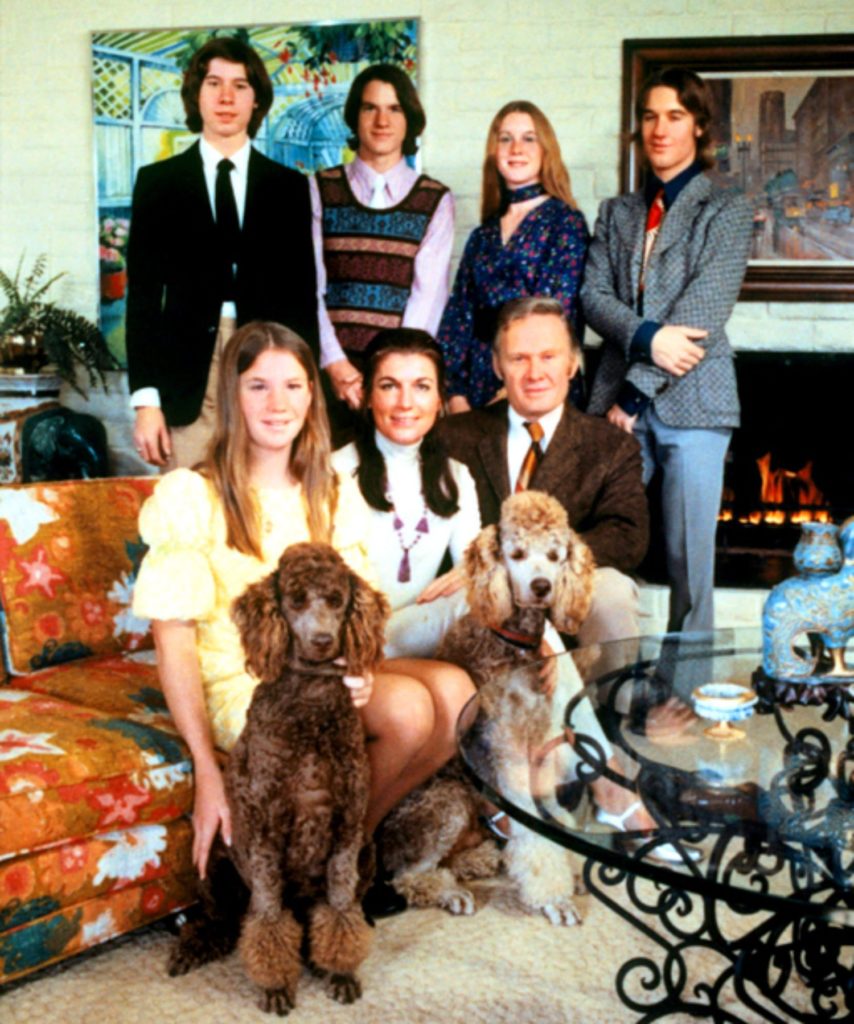
- S. I. Hayakawa, 1973The reason I think so many people are talking about this program is not only that it touches on real people's lives, but it has made a lot of people aware of the fact that in a television show there is an interaction between filmer and subject.
The Production of "An American Family"
In 1973, PBS released twelve-part documentary series “An American Family“. Spearheaded by Producer Craig Gilbert, the series would focus on the daily lives of one family, the Louds. The Loud family was made up of parents Bill and Pat and children Lance, Kevin, Grant, Delilah and Michelle. Bill owned a semi-successful construction company which he hoped his sons would become a part of and Pat was an educated and feminist stay-at-home mom. Lance Loud, their eldest, is credited as being the first openly gay character in a series. While documentaries had previously dealt with specific incidents, this series focused primarily on personalities with emphasis on Pat and Lance, the more outspoken members of the family.
The crew filmed over 300 hours of footage to create the twelve, one-hour episodes. It became obvious right away that liberties would have to be taken with the material and certain key events were even orchestrated by the production. In particular, Bill was a noted philanderer and Pat was urged to divorce him on camera. Certain behaviors of each family member were emphasized inferring personality flaws, such as Bill always being filmed with a drink in his hand. He later addressed the rumors of his alcoholism stating that when the film crew only picked up their cameras if he had a drink in his hand, he was bound to look like he was always drinking.
The Release
Margaret Meade, Cultural Anthropologist[An American Family] may be as important for our time as were the invention of drama and the novel for earlier generations: a new way to help people understand themselves.
The first episode of An American Family was broadcast on Thursday, 11 January 1973, at 9:00 p.m., eastern standard time, the same evening as the family drama The Waltons. PBS broadcast the next eleven episodes each following Thursday at the same time. The release schedule allowed audiences to build a personal relationship with the family with one critic noting that, by the end, the viewer was rooting for his or her favorite Loud. Because the series was edited in an almost soap opera style, critics were all over the map on their appraisal. It was both panned and celebrated in its time, largely due to the attitudes of the industry delegitimizing television in favor of film, much in the same way that web productions are delegitimized by the film and television industry today. Some reviewers called the series ‘a bastard union of several forms’, ‘a most artificial situation’, and, in one poignant review in The Nation, a critic stated ‘the mirror is false’ with regards to how much reality was actually in this “reality” docudrama.
WNET Publicity Materials, 1973The series aim in focusing on one specific family was to illuminate and reflect facets of behavior, feelings, and attitudes common, in varying degrees, to all American families.
Publicity materials for the series featured a polished photograph of the family in their home, each member dressed in a complimenting and conservative outfit. This image served as juxtaposition to the more controversial content of the episodes. The press release also featured wording that made the family’s wealth and status abundantly clear, describing their home as “headquarters” and detailing the four family cars (a Jaguar, Volvo, Toyota, and a Datsun pickup truck). Luxury was heavily inferred almost as a nod to the picture perfect image being in stark opposition to the reality of what viewers considered a disintegrating family. A direct dig at Lance’s sexuality was made by referencing his “dyed purple clothing”, his bleached hair, and his lifestyle in Chelsea, Manhattan – almost the antithesis of what viewers would consider a “respectable” lifestyle.
Instead of teasing the divorce of the parents, the press release immediately leaked it and the first episode began with a scenes from the last day of filming, in which it is made clear that the 20 year marriage was over. I think this is insanely smart, from a story-telling perspective, as it really baits the viewers to keep coming back each week to see what the fuck happened to destroy this picture perfect family.
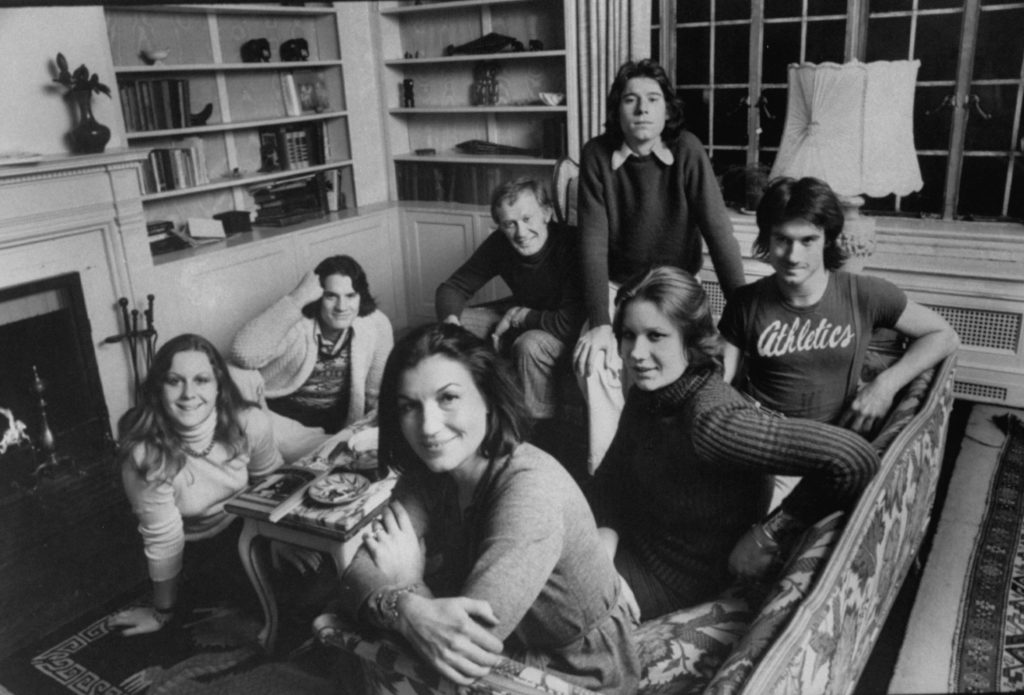
The Aftermath
While some attention was paid to the lurid manner of editing and creation of the narrative which just didn’t jive with the previous ethics of documentary journalism, the bulk of the criticism was lobbed at the family members and their perceived personality flaws. Anne Roiphe’s nine-page article in the New York Times called the outwardly gay Lance an “evil flower” and an “emotional dwarf”, relying entirely on what she didn’t see in the portrayal of the young man rather than what was captured in the series. She also referenced the 15-year-old Delilah, stating that “[she], like the rest of the Louds, never grieved for the migrant workers, the lettuce pickers, the war dead; never thought of philosophy or poetry, was not obsessed by adolescent idealism, did not seem undone by dark moods in which she pondered the meaning of life and death.” Semiologist Sol Worth responded to this particular criticism by saying “pictures can’t say ain’t”.
The dissolution of the marriage and their proud gay son created the narrative of a “weakening moral fiber” in American family culture and highlighted the entertainment value of watching a real struggle. Furthermore, because a lot of attention was paid to the “liveness” of the episodes, criticism for events and actions portrayed in the series gained new attention despite the fact that 9 months had passed since filming.
SOURCES
Cameras Change Behavior
In discussing the culture and potential downfalls of family vlogging, we have to consider the way being monitored changes our behavior and impression of events. Researchers have been studying surveillance for a long time and what the studies show could potentially have a huge impact on our perceptions of family vlogging as an industry.
Surveillance in the "Real World"
Humans are finely tuned to be careful with their actions while being observed, even if by illustrated eyes. A group of researchers from the University of Newcastle in the UK found that watchful eyes could reduce the number of bicycles stolen. By using the university’s crime database, they identified three spots on campus that suffered extremely high rates of bike theft, and installed signs at each location. The signs featured a pair of male eyes gazing outwards, along with the headline “Cycle Thieves: We Are Watching You”, the name “Operation Crackdown”, and the logo of a local police service. The signs caused an impressive 62% decrease in thefts in each of the three locations. Unfortunately, there was an equivalent increase in thefts elsewhere. While the intervention only displaced the thieves to other spots on campus, it was clear that the feeling of being watched was an effective deterrent.
Humans are so sensitive to being watched in part to attend to reputations and to keep our place in social structures, which are valued above everything else. We routinely act more selfishly when not monitored, and more conservatively when under the watchful eyes of others…and all of this seems to happen outside our conscious thought. Interestingly enough, our closest cousins, chimpanzees, don’t share this social behavior. Chimp patterns are consistent whether they are being watched by other chimps or not, despite their hierarchal social structure.
Childhood Development and Privacy
Calvin Gwandure - Life with Limited Privacy due to Housing Challenges: Impact on Children’s Psychological FunctioningCommunities and families that fail to provide adequate living space for the maintenance of children’s personal privacy could be violating children’s rights to normal human development and that lack of protection is tantamount to violence against children.
Research has demonstrated that invasion of privacy results in the development of emotional disorders, such as anxiety disorders, mood disorders, stress or depression (Briere & Smiljanick, 1994; Demare, Briere, & Lips, 1988; Friedman & Reed, 2007; Hughes, 2004).
An individual’s personal space is like a sanctuary in which habitation welfare is centred. Environmental psychologists, ethologists and biologists indicate that, even among animals, birds and other living organisms, a violation of living space disturbs psychological functioning and behaviour (Jorgensen & Tylecote, 2007; Silove, 2004). People and other living organisms become mentally, physically and emotionally attached to their living spaces in which individual privacy is maintained (Biswas-Diener & Diener, 2006; Coolen, 2006). Some researchers and educators have posited that children from informal settlements, resource poor communities, crowded communities, and high density suburbs could exhibit behavioural problems in school and in their immediate community (Brook, Morojele, Pahl, & Brook, 2006; Cluver & Gardener, 2006; Emmerson, 2003). Children could also exhibit conduct disorders, such as drug and alcohol abuse, fights, use of dangerous weapons to attack opponents, promiscuity, HIV and AIDS risk behaviour, impulsive behaviour, inattentive behaviour, disruptive behaviour, leaving home without telling parents, staying out at night, insubordination, or blaming authority 34 figures for their own shortcomings (Flisher, Evans, Muller, & Lombard, 2004; Rowe, Maughan, Costello, & Angold, 2005; Tripp, Schaughency, & Clark, 2006). Sexual risk behaviours among children living in difficult circumstances could be associated with high forms of sexual suggestibility, sexual tolerance, HIV infection, and failure to detect risk situations that might result in sexual assault or revictimisation (Marx, Calhoun, Wilson, & Meyerson, 2001; Schloredt & Heiman, 2003; Thompson et al., 2003; Wenninger & Heiman, 1998). The interest of this study was to investigate the role played by environmental factors relating to housing in the development of behavioural pathology among children living in communities with limited living space and privacy.
Unicef released a guide to Children’s online privacy and freedom of expression in which they stated:
- Children have the right to privacy and the protection of their personal data.
- Children have the right to freedom of expression and access to information from a diversity of sources.
- Children have the right not to be subjected to attacks on their reputation.
- Children’s privacy and freedom of expression should be protected and respected in accordance with their evolving capacities.
- Children have the right to access remedies for violations and abuses of their rights to privacy and free expression, and attacks on their reputation.
Children’s reputations are increasingly shaped by the growing quantities of information available about them online. This not only influences children’s interpersonal relationships, but may also have an impact on their ability to access services and employment as they enter adulthood. While the extent, nature and importance of reputation continue to evolve in a digital world, children may be empowered to protect their online reputation where:
• Children can easily request that their personal data are corrected or deleted, especially where the data have been collected or published without their permission, and can seek the removal of content they believe is damaging to their reputation
• Parents or guardians, media outlets and other third parties refrain from sharing information that could undermine children’s current or future reputation
• Children are equipped with digital literacy skills that enable them to make informed choices about generating and sharing personal content • Parents or guardians are equipped to guide and assist their children in taking appropriate action to protect their online reputation
SOURCES
Myka Stauffer's Beginnings
Before YouTube Fame
The couple met on the dating website OkCupid and had their first date at a brewery in Cincinnati, where Myka was living at the time. “She literally took my breath away,” James recalled in a 2015 YouTube video about their relationship. The night of their first date, he went back to Myka’s house for “coffee,” she said in the same video, using air quotes and awkwardly laughing. They married in July 2014.
About eight years ago, Stauffer left her then-fiancé, with her daughter Kova in tow. “Something happened in regards to infidelity, and I left,” hints Stauffer in a video from 2016.
She says she met Kova’s dad, a doctor, in college and says she got pregnant about four months into their relationship. She miscarried, and the doc proposed while on a horse and buggy ride through Chicago while on a trip to lift their spirits. They decided to try again a few months later. “On Thanksgiving, we conceived Kova. [On] Christmas Day I took a pregnancy test and was pregnant,” says Stauffer in the clip.
“It was the hardest year ever,” the blond blogger says of the time after walking out on her husband-to-be. “I broke up with her dad one day before we were supposed to go on a very nice vacation and one week before we were supposed to move into this beautiful dream house,” she says. “I walked away from everything because it wasn’t a future I was comfortable with.”
At this point, she was already trying to be social media famous, creating videos about being a single mom, her juice fast and other trending “lady” topics. Her personality is noticeably more sharp in these early videos, which, to be fair, could be more about her getting into the “mommy” groove and less about donning a fake personality. Many people have noticed that she slips into her sharp tone when not on camera, though.
Myka's Nursing Career
Rumors are swirling about Myka’s past as a nurse. She was a registered nurse until 2013. She claims that she chose to let her license lapse.
But sleuths have discovered that a nurse with Myka’s exact name was allegedly involved in a physical altercation at a hospital un 2013.
Before her career as a Christian family YouTuber, Myka worked as a registered nurse at an Ohio hospital under her maiden name, Bellisari. A nurse with her exact same name who worked at an Ohio hospital in the same timeline was accused of using a hospital cart to physically assault a pregnant nurse.
A lawsuit against Mercy Franciscan hospital indicates that a nurse by the name of Myka Bellisari was involved in a physical altercation with another nurse. The hospital gave Bellisari a written warning and threatened to fire her for any additional incidents. The hospital fired the other nurse, and she sued for wrongful termination.
It has not been confirmed that this is the same Myka Bellisari.
It’s possible that a totally different woman also happened to have the exact same name, was a registered nurse in this exact timeline, and worked in Ohio.
Neighbor Says She's Fake
I can’t substantiate the claim, but on one commentary video a person who claims to be an ex-neighbor of the Stauffers had a lot of damning things to say about their characters but mostly had a lot to say about Myka. She stated that Myka was fake, donning a baby-voice when it suited her and being sharp and dismissive otherwise. She said that both she and Jim used their other elderly neighbors as free childcare and got pissed off when the neighbors started refusing to watch their children on date nights.
She remarked that she wasn’t surprised to hear of Myka adopting or that rehoming H because they seemed to be really inconsistent and trend-driven people; adopting and rehoming multiple pets, going vegan one day and eating meat the next, whatever was going to get them a successful YouTube channel.
She says the one thing that did surprise her was that she was claiming to be Christian. The neighbor went on to explain that she didn’t care if people went to church or not, so that wasn’t the issue, Myka had just never shown any leaning towards faith of any kind until she saw how much money you could make as a Christian mommy vlogger. She also mentioned that homeschooling was not an interest until YouTube, as well.
View this post on Instagram@cozycatsandbooks Well Done for uncovering Mykas REAL voice 😂.
space:nowrap;">A post shared by The Influencer Investigator (@influencermomsnark) on
View this post on Instagramspace:nowrap;">A post shared by The Influencer Investigator (@influencermomsnark) on
SOURCES
Family Vlogging = Big Business
Income Potential
Creators on YouTube’s main platform typically earn between $1,000 and $5,000 in ad revenue per one million views on their videos. YouTube has nearly 2 billion monthly users, the company says, and is the second most popular website in the world, behind only Google. YouTubers with upwards of 1,000 subscribers and 4,000 watch hours in the past 12 months have the ability to link Google Adsense to their account, which allows them to monetize their content.
Shay Butler - Family VloggerWhat once helped pay for groceries and utility bills had now turned into our main source of income. Once we started the daily vlogs our viewers and pay immediately tripled. It was amazing!!! I was now making more money than I had ever made doing something that I actually LOVED doing
The other problem that is incredibly hard to prove, but compelling when you look at the numbers, is that when you vlog your pregnancy, your birth, or your new baby…your views go up exponentially. There’s no way to prove that this incentivizes family growth, but there is some suggestion that people have used fake pregnancies and miscarriages to boost their viewership (see: Sam and Nia).
Primary Demographics
It’s unsurprising to find that a large amount of viewers happen to be young people perhaps on the verge of becoming parents or already parents. It’s not out of the realm of possibilities to think that a person who may be dealing with toddler temper tantrums or weird nap schedules would want to see how other parents approach these conundrums. People who enjoy children but don’t want any of their own at the moment also seem to enjoy the experience of “being with” these families without the responsibility of participation. It’s a less involved form of babysitting to calm your ovaries.
The other primary demographic is children. Children love to watch how other families operate, and these vloggers often flaunt lifestyles, consumerism, and “pranks” that children really love. The problem is not that kids like to see how other families approach their days, but that a lot of the bad examples and consumerist propaganda seeps into their heads. If you only show the best of times, plan vacations for views, and play an exaggerated character (as most family vloggers do) other children who watch will not understand why their experiences in family interactions aren’t similarly exciting and fun. Also, I cannot tell you how often I’ve had to explain the concept of “pranks” to my kid. “Hey, I get that this would seem like a prank, but if it’s painful or mean-spirited it’s not a prank, it’s just cruelty
SOURCES
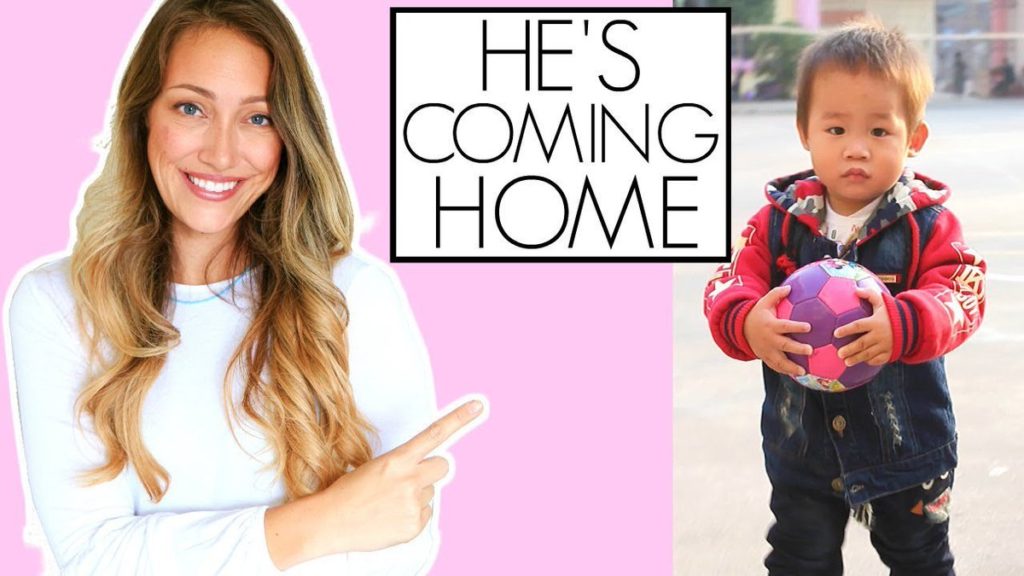
The Adoption of "H"
Monetizing the Adoption Process
Her adoption journey kickstarted her YouTube Channel and she heavily covered it, monetizing every video on H., their thoughts, and teasing images and information about him consistently.
They had a fundraiser where people who donated $5 would receive a puzzle piece and once they hit 1000 donations, they would put the puzzle pieces together to finally show a picture of little H. I had a hard time finding out how many donations they received, but $5000, while not a lot of money, would make a big impact on their already solid financial situation. Considering she was already monetizing his videos, it’s likely that she paid for his adoption, travel, and then some using his name and story for her own gain.
Warnings from Specialists
Myka and Jim took H’s casefile to a lot of specialists to determine if he was going to be a good fit for their family. In a deleted video, she states that at least one doctor told her his needs were going to be really intense and that he was likely not going to be a good fit for their household. There is zero reason to believe the Stauffers weren’t briefed on the worst-case scenarios for H, Myka just didn’t care. She was naive and selfish, too absorbed in her adoption journey videos and virtue signaling to do what was right for everyone.
The Trauma of Adoption
Long-term Psychological Effects
Post-traumatic stress disorder (PTSD) is a condition in which victims of overwhelming negative experiences are psychologically affected by feelings of intense fear, helplessness, and vulnerability. Many studies have shown that there is a connection between children’s exposure to traumatic events and their subsequent psychological problems. PTSD symptoms in children may last for a long time, and may include, but not be limited to: disturbing memories or flashbacks (e.g. nightmares and fear of re-experiencing traumatic event), avoidance behavior (e.g.: avoiding thoughts, feelings, conversations regarding the event(s), hyper-arousal (e.g. hyper-vigilance, exaggerated startle response).
There is also evidence that early removal from stable caregivers, even before permanent memories are formed, can vastly change young infants. I’ve included two videos from the 1950s-60s that clearly demonstrate the psychological, social, and intellectual ramifications of early maternal loss, neglect, and deprivation.
Overwhelmed International Orphanages
In some countries (especially countries who have previously practiced limitations on births) the strain on orphanages is immense. There are typically too few workers to properly nurture and support childhood development and attachment. Children will often spend a lot of time alone in their cot, or restrained on a potty toilet to keep them safe while one worker takes care of upwards of 30 extremely young children at a time. I would never fault these workers for doing the absolute best they can in such dire circumstances, and I am sure some emotional distance helps them retain the strength to return to work every day, but this is neglect to the highest degree. Furthermore, this early nurturing is essential for children to learn social skills and even supporting normal brain development. Children who suffer this early neglect have smaller brains with less folds than even children who have been physically abused but otherwise have had consistent interaction with parental figures.
CW: Extremely distressing images of neglect, sick children, and psychological damage to developing minds.
This is an older documentary, so this is not to imply that the conditions of Chinese orphanages are still this dire at all, but there are a lot of good examples of some of the hardships children face in overworked and understaffed orphanages.
Children with this early neglect often exhibit difficult to manage self-soothing methods including rocking, self-injury, food hoarding, and reactivity that may include tantrums, angry outbursts, and weeping. These children will always need more help than the average special-needs child.
Even in the best orphanage situation, children will often experience emotional neglect. While emotional neglect can be an intentional disregard for a child’s feelings, it can also be failure to act or notice a child’s emotional needs. Parents who emotionally neglect their children may still provide care and necessities. They just miss out on or mishandle this one key area of support.
Symptoms of childhood emotional neglect can range from subtle to obvious. Much of the damage from emotional neglect is silent at first. Over time, however, the effects may begin to appear.
The most common symptoms of emotional neglect in children include:
- depression
- anxiety
- apathy
- failure to thrive
- hyperactivity
- aggression
- developmental delays
- low self-esteem
- substance misuse
- withdrawing from friends and activities
- appearing uncaring or indifferent
- shunning emotional closeness or intimacy
Black-Market ReHoming
Beyond the pain of being an adoptee in the first place, a black market re-adoption ring has been around for many years…even before the Stauffers. Mind you, I’m not suggesting that the Stauffers illegally rehomed H, and the Ohio PD and FBI seems to corroborate that everything was done above board, but this idea that when a child doesn’t work the way you expected them to in your home that you can just re-traumatize them by subjecting them to another adoption is the root of all this fucked up business.
In 2013, Reuters published an exposé on this practice, revealing an insidious online adoption black market where children were re-adopted and subjected to physical, sexual, and emotional abuse, beyond the initial damaging readoption process. This black market still exists in other forms today. As affluent public figures, the Stauffers did not need or want to turn to the internet to place Huxley, though the private process they went through was briefly under investigation. No matter what, the psychological harm is done.
SOURCES
"H" Comes Home
Attachment Issues with Myka
View this post on Instagramspace:nowrap;">A post shared by The Influencer Investigator (@influencermomsnark) on
Myka has admitted very early on that she didn’t bond with H the way she expected to. Right away, it was clear that he preferred Jim and would seek him for comfort over her. He had maternal figure before adoption that he apparently was closely bonded with, so this makes sense, but when Myka spoke about it she sounded almost bitter. Like, he was going against the grain if he didn’t adore her right away. She didn’t expect to have to earn his trust and love. That being said, he clearly eventually bonded with, loved, and relied on Myka and could be seen almost begging for affection and comfort from her during vlogging. With her other children, she definitely displays narcissistic tendencies (filming her oldest daughter while she cries because she’s going to miss her mom while she’s away and smiling the whole time, completely unphased by her daughter’s distress), but with H those tendencies were clearly exacerbated by his early disinterest in her.
And here’s a video of her talking about downgrading Huxley’s speech therapy from a $500/month one to a $70/month one while she waves around the ~$6500 Cartier bracelet on her wrist. pic.twitter.com/xVDLHqbvXh
— Sophie Ross (@SophRossss) May 28, 2020
Imagine if Huxley had been one of her biological little white kids instead of an adopted Chinese boy. pic.twitter.com/8IpSbIIJ0X
— Captain America 🌹🔻 (@MicroTrashPanda) July 25, 2020
Treatment of "H" Differs from Biological Children
While most families try to be considerate of costs and actively save and plan for a rainy day, Myka seemed to go above and beyond when it came to H’s care. She could be seen balking at the price of the reputable speech therapist that was recommended while flaunting her $7k Cartier bracelet in one video. Myka has also previously revealed that her husband can make $42,000 off one video. So, obviously, money is not an issue for them.
Fans also noticed the difference in treatment between H and her biological children. In an early Instagram post from Myka, she shows her eldest daughter sitting on the couch and sucking her thumb with the caption saying something to the effect of “I know she has to grow up but I wish this would never end.” In response to H sucking his thumb, he was promptly put in a thumb guard or, in one instance, duct tape was wrapped around his thumb. The excuse was that their dentist suggested they curb that right away or they would risk having to do orthodontic surgery later, but considering not only his developmental delays but also the fact that he was dealing with trauma and change, most folks agree this was petty and cruel to do to the little guy.
Myka had also previously complained about H’s food obsession, saying that even if he had food in front of him, he would stare at other people while they ate. She also said it drove Jim nuts. She could be found on vlogs telling a weeping H that he already ate and he didn’t need more food instead of comforting him. People who have adopted children from orphanages tried to suggest what seems to work best for kids with these food anxieties is to always let them carry food with him, but that didn’t seem to fly with Myka and Jim.
Myka later stated that H wasn’t in many vlogs after adoption because he had numerous meltdowns per day, some of which she captured and included in the videos. In one, H is having a meltdown and Myka sharply says “Are you done? Are you done? Are you over yourself?” There’s a different one where Myka has the camera on H who is weeping and reaching for her and she says “We don’t bite! No squeezes. We don’t bite! That’s not nice!” while she actively steps away from his hands. Only after she berates him about doing a normal toddler thing does she squeeze his arm.
Children's Rights in Media
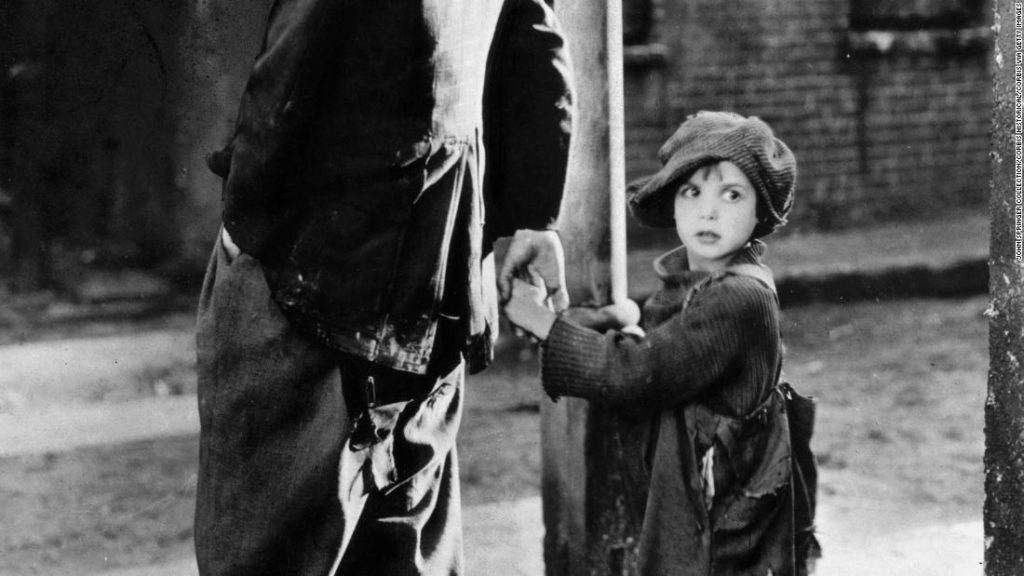
Coogan's Law
That bill was enacted in 1939 and is named after Jackie Coogan, the nation’s very first child movie star. Coogan shot to stardom after playing Charlie Chaplin’s sidekick in 1921’s The Kid, and went on to star in a string of movies for Metro-Goldwyn-Mayer, earning as much as $4m while still a minor. He expected to take control of his fortune when he turned 21, but after his father died and his mother remarried, he learned the unfortunate truth: “Every dollar a kid earns before he is 21 belongs to his parents,” Coogan’s stepfather told the press in 1938, after Coogan sued to gain access to his money. “Jackie will not get a cent of his earnings.” Under common law, parents have always owned the earnings of their children.
Coogan’s Law requires parents to set aside a percentage of a child performer’s earnings in a blocked trust (now known as a Coogan account) where it would remain untouched until the child reached adulthood.
The law also required state courts to ratify the contracts of child performers – a provision lobbied for by Walt Disney himself that codified the state’s distrust of stage parents to act in the best interest of their children, explained David Pierce, co-chair of the entertainment law section of the Beverly Hills Bar Association.
Other legal protections followed. Child performers must obtain work permits, and there are strict regulations limiting their working hours, requiring “rest and recreation” time when they are on set, and mandating that work not interfere with their education. Producers on film sets are responsible for safeguarding the “health, welfare, safety and moral well being of the children” on set, Pierce said, which includes screening the backgrounds of the cast and crew and ensuring the children aren’t exposed to age-inappropriate sex or violence.
Still, it wasn’t until the 1999 overhaul that California legislators took the radical step of stating in law that child performers own all of their earnings, not just the 15% set aside in Coogan accounts. Parents can use the remaining 85% to care for the child, whether that’s purchasing a house, covering their expenses, or even paying themselves a salary to manage the child’s career, but the money is the child’s property.
“It’s kind of a blurry situation,” said Pierce. “I don’t think any case has ever come forward where a child has said, ‘Hey, this was my money and you embezzled it’. But theoretically, when you look at the law, that could happen.”
Absence of Protection for Child Reality Stars
Jon Gosselin, Jon & Kate Plus 8Why is NASCAR one of the most watched sports in America? They’re looking for the wreck. If people didn’t want to see reality shows with kids, there wouldn’t be a market for it.
Jon Gosselin, formerly of Jon & Kate Plus 8, fought to end his children’s involvement in the popular TLC series after noticing the negative effects production was having on their emotional health. He now advocate for stronger protections for children in reality television saying “the American public is the biggest problem.”
Reality television stars have admitted to all manner of shady tactics used by production, from supplying the cast of “Here Comes Honey Boo Boo” with junk food like cheese-balls and snack cakes despite the public concern for their overweight children, to instigating conflict on the already stressful set of Dance Moms. People want to see the wreck, and production makes it happen.
Child labor laws vary greatly from state to state, and there are no federal laws that protect kids on reality productions. (Sen. Dick Durbin of Illinois recently advocated for Esquire Network to cancel its youth football series Friday Night Tykes, calling it a “shameful, dangerous display” that “directly endangers the health of children.”)
“California by far has the strongest laws,” said Paul Petersen, chairman emeritus of A Minor Consideration, an organization that provides support to child stars via advocating legislation and family education, and who himself was a Mouseketeer on the The Mickey Mouse Club when he was 10. “But [some states] actually use the absence of child labor laws as a production lure.”
- Pennsylvania Representative Tom MurtAs soon as they got wind that we were going down this road, entertainment industry lobbyists got involved. They said that if these laws are too strict we’d drive productions out of Pennsylvania. We’re willing to work with them, but without child labor laws, kids could be filmed 24/7. A child’s innocence would be auctioned off to the highest bidder.
COPPA - (Children's Online Privacy Protection Act)
This part implements the Children’s Online Privacy Protection Act of 1998, (15 U.S.C. 6501, et seq.,) which prohibits unfair or deceptive acts or practices in connection with the collection, use, and/or disclosure of personal information from and about children on the Internet.
Collects or collection means the gathering of any personal information from a child by any means, including but not limited to:
(1) Requesting, prompting, or encouraging a child to submit personal information online;
(2) Enabling a child to make personal information publicly available in identifiable form. An operator shall not be considered to have collected personal information under this paragraph if it takes reasonable measures to delete all or virtually all personal information from a child’s postings before they are made public and also to delete such information from its records; or
(3) Passive tracking of a child online.
Disclose or disclosure means, with respect to personal information:
(1) The release of personal information collected by an operator from a child in identifiable form for any purpose, except where an operator provides such information to a person who provides support for the internal operations of the Web site or online service; and
(2) Making personal information collected by an operator from a child publicly available in identifiable form by any means, including but not limited to a public posting through the Internet, or through a personal home page or screen posted on a Web site or online service; a pen pal service; an electronic mail service; a message board; or a chat room.
Personal information means individually identifiable information about an individual collected online, including:
(1) A first and last name;
(2) A home or other physical address including street name and name of a city or town;
…
(8) A photograph, video, or audio file where such file contains a child’s image or voice;
(9) Geolocation information sufficient to identify street name and name of a city or town; or
(10) Information concerning the child or the parents of that child that the operator collects online from the child and combines with an identifier described in this definition.
YouTube is wildly popular among kids: More than three-quarters of 8- to 12-years-olds report using the site, and its fifth most popular video, with nearly 4 billion views, is of children and animated characters singing and dancing along to “Baby Shark.” Kids’ content is incredibly lucrative for YouTube, which keeps nearly half of the advertising revenue generated by content on the platform. It even promoted the site to advertisers as a way to reach children. But because YouTube does not want to have to concern itself with children’s privacy protections, it continues to claim that the site is only for ages 13 and older. However, as Massachusetts Sen. Ed Markey recently noted in a letter to Google about protecting children online: “The access that children have to YouTube carries with it a corporate obligation to institute and enforce policies that protect the well being of these young users.” As part of its FTC settlement, Google created a new system allowing YouTubers to mark their content as “Made for Kids.” Once they do, Google disables some of the site’s features, such as personalized advertising, commenting, and notifications for these videos.

So, children viewing content have more legal protection than children creating the content. Totally makes sense.

Kidfluencers, Child YouTubers & Free Child Labor
I am astonished by the sheer lack of protections for children on influencer platforms. You can see children front and center for every type of content from family vlogging to sketch entertainment and the parent’s don’t seem to realize that the constant filming, the exposure to a wide audience, and the inherent pressure to be perfect for the camera is absolutely child abuse if it’s unregulated. Furthermore, children cannot consent to this filming and constant scrutiny and we really don’t know how that is going to affect them in the future with regards to their mental health, their employment, or their personal relationships. Imagine your entire life being documented from the time you were a child, all your personal experiences and failures as mass entertainment. Imagine seeing the commentary on the videos in which your behavior is highlighted…this shit is rough for adults, how the fuck can we put kids in this without protections and guidelines???
Sheila James Keuhl, former child star and Los Angeles County Supervisor“I don’t care if it’s simply unboxing presents, that’s work. It is not play if you’re making money off it. It definitely is time to take a look at the ways parents or other adults are making money off the performance or work of minors. The law needs to be amended to catch up with the technology.”
There is a ton of “oh, but it’s not work for anyone but the parents” talk from the stage-parents of kidfluencers. “The thing I always stress is that we work, the girls do not,” said Ami McClure, the mother of twins Alexis and Ava (who were featured in Forbes as one of 2017’s top kid influencers), in a recent Guardian interview. Bee Fisher, the mother of three Instagram-famous boys, told Wired, “If there’re days they’re totally not into it, they don’t have to be … Unless it’s paid work. Then they have to be there. We always have lollipops on those days.”
If that sounds questionable to you, you are probably an ethical human being…you don’t get a cookie, that should be the standard. The problem with the mindset of these creators is that when it becomes paid work, the children have no say in their participation…and lots of influencers and vloggers have created channels where the ad revenue makes every upload paid work. So, how do you parent or discipline when your paycheck is built off the image of your children on camera?
In March of 2019, Machelle Hobson, a now deceased Arizona woman, was charged with abusing five of her seven adopted children. The details of the abuse are extreme by all standards and include extreme sexual violence, beatings, starvation, and neglect on her adopted children who ranged in age from 6 to 15-years-old. Her two adult sons were brought up on charges of failure to report abuse, but they were dropped.
“All the children made mention of having to participate in their mom’s YouTube channel called Fantastic Adventures where she has over 700,800 followers and over 242 million views,” read the police charging documents. “The Fantastic Adventures series stars the adopted children in different scenarios. They stated they are disciplined in the manners above if they do not recall their lines or do not participate as they are directed to. They further stated this is one of the reasons their mom took them out of school so they can keep filming their series and they mentioned they have not been in school for years.”
YouTube’s initial response to the arrest was to demonetize the Fantastic Adventures account (ie stop running ads on the videos); the company later terminated the account. Hobson has pleaded not guilty. A tax form from Google shows that she made nearly $300,000 from the YouTube channel in 2018, according to the Arizona Republic.
SOURCES
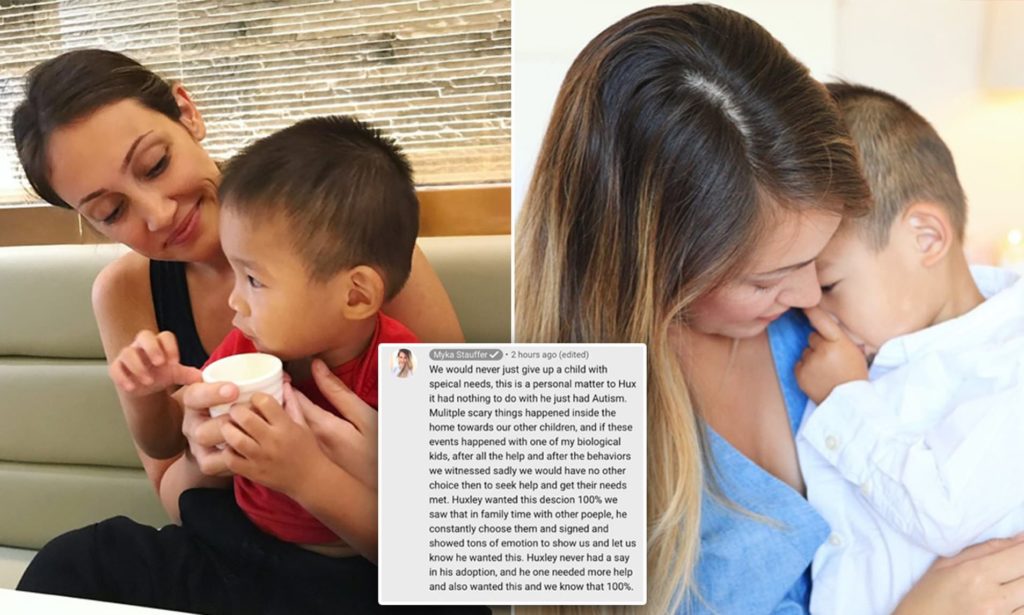
The Adoption Scandal - Myka Rehomes "H"
Luxurious Vacation in Bali (& Rehoming)
At some point in the winter of 2019/2020, H was admitted to a six-week intensive in-patient treatment center. In late January, the Stauffers and their youngest child took a 2-4 week vacation to Bali. In the vlog immediately predating the trip, you can briefly see H in the background. It’s not until February 2020 that fans came to the realization that H was gone. It becomes really apparent that before the trip to Bali, while they were packing, H was in the home, participating in family life. He appears to have been placed in temporary foster care just before they left for vacation. Of course, it will always be unclear how much H understood, but considering his massive cognitive disabilities and developmental delays, I have a difficult time believing he understood that he would not be coming home again.
Fans Wonder Why He's Absent
It didn’t take long for people to notice H’s complete absence in Myka’s family vlogs. While he had already infrequently been shown, he hadn’t been seen in months by the time the shit really hit the fan. Comments started piling up on the family channel (now deleted), Myka’s channel, and her Instagram. “Where’s H” became a consistent concern for fans and critics of the family alike. It was clear that Myka and Jim weren’t going to be able to avoid responding any longer and they made the infamous “white apology video”. In March of 2020, Myka made an Instagram post stating that “this was the hardest mother’s day [she’d] ever had.”
Myka & Jim Stauffer Admit to Rehoming, Chaos Ensues
By now, everyone has heard about this white-apology video. Neither of them are particularly honest or forthright, neither takes responsibility for the hurt and damage they did to H and the international adoption community in general, and both Myka and Jim center Myka in the conversation. It’s her loss. She’s wracked with guilt. She misses him. She did everything she could. She is an amazing mother. He is still referred to as “our son. On the same day they did this crocodile-tear video, Myka filmed a dance TikTok with her eldest daughter. Like school in the Summer-time…NO CLASS.
Andrea Ruggirello, Bitch MediaAs a Korean American transracial (read: adopted by white parents) adoptee, anytime an adoption-related story goes viral, my stomach lurches. [...] They’re all part of the same damaging white-savior adoption narrative that silences adoptee voices, and turns stories of trauma into feel-good news clips.
What is Reality?
The long and short of all of this is that none of it is real, all of it is damaging (to the kids, to parents who feel guilt at not providing a picture perfect life like the ones they see in vlogs and on Instagram, to the ability of vlogging parents to truly connect with their children in appropriate ways). There are no protections for children from this kind of public scrutiny and their ability to consent is not even a factor in the decision making process of the parents to whom they are essentially providing free labor. The Stauffers aren’t the only toxic family vloggers, nor are they the worst, they are one example of many and we all need to say enough is enough.
